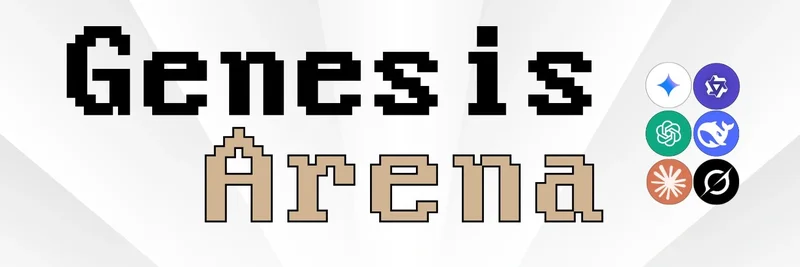Pi Network has been making waves in the crypto space since its inception, especially among mobile users who love the idea of mining coins right from their phones without draining batteries or needing fancy hardware. Now, with over 60 million users and a whopping 14.82 million KYC-verified accounts, the project is rolling out one of its biggest upgrades yet: version 23 (v23) of its protocol. This isn't just a minor tweak—it's a game-changer that embeds compliance features, beefs up security, and paves the way for more advanced DeFi applications. If you're into meme tokens like $PI, which thrives on community hype and accessibility, you won't want to miss this.
What's Behind the v23 Upgrade?
At its core, Pi Network runs on a customized version of the Stellar Consensus Protocol, tailored for easy mobile mining. Pioneers—that's what they call users—earn $PI coins through the app, making it feel more like a fun, community-driven meme project than a hardcore mining operation. The v23 upgrade, announced in late August 2025, shifts things up a notch by integrating key features directly into the protocol.
One standout change is the embedding of KYC (Know Your Customer) authority right at the protocol level. This means identity verification becomes a built-in part of the network, helping with regulatory compliance like anti-money laundering rules. It's a smart move for a token like $PI, which has meme-like viral appeal but needs to mature for real-world use. In the future, this authority could even be delegated to trusted community members, pushing toward true decentralization without losing oversight.
Security gets a major boost too. Think biometric logins using fingerprint or face ID, plus stronger two-factor authentication for wallets. This builds on earlier requirements, like email verification for migrations, and aims to cut down on fraud—crucial for any meme token community where trust can make or break hype.
Smart Contracts and Scalability: Leveling Up for DeFi
Meme tokens often start as jokes but evolve into ecosystems with real utility, and $PI is no exception. The v23 upgrade enhances smart contract capabilities using Soroban, opening doors to automated payments, DeFi tools, and even tokenizing real-world assets like real estate or supply chains. Community ideas, such as integrating with fiat on-ramps like Banxa and Onramper, are also in play, making it easier to buy $PI with traditional money.
On the scalability front, expect faster transaction speeds, lower gas fees, and a more resilient network. This is huge for Pi's ecosystem, which already boasts over 21,000 apps. Aligning with standards like ISO 20022 ensures $PI can play nice with global financial systems, potentially turning it into a meme token with serious staying power.
The New Linux Node: Making It Easier for Developers
Alongside v23, Pi Network dropped a Linux version of its node software on August 27, 2025. Previously limited to Windows and Mac, this release targets developers and exchanges, offering auto-updates and self-managed ops for better stability. It's not about changing mining rewards—those stay the same—but about broadening access in open-source environments. If you're a blockchain practitioner tinkering with meme token projects, this could be a handy tool. Check out the installation guide here.
Rollout Timeline: What to Expect
The upgrade kicked off in late August 2025 and is set to wrap up through September, with phased testing to avoid big disruptions. It started with Testnet1 for initial checks, followed by Testnet2 for deeper validation. Mainnet rollout comes next, so keep an eye out for any short outages, especially if you're using third-party services like exchanges.
As of early September 2025, things are smooth, with no major issues reported. This careful approach shows Pi Network's commitment to its massive user base, ensuring the $PI meme doesn't fizzle out due to technical hiccups.
Pi Network's 2025 Momentum: Beyond the Upgrade
2025 has been a banner year for Pi. The open network launch in February allowed external connections, and now with v23, it's building on that. Highlights include:
- Pi Hackathon 2025: Launched in August with 160,000 $PI in prizes, encouraging devs to build mainnet apps.
- Fiat On-Ramps: Partnerships with Onramper and Banxa for easy crypto buys.
- Wallet Activations: Expanded in May for verified users to access their balances.
- Migrations and Grace Periods: Phased transfers to mainnet, with unmigrated coins forfeited after March.
- Ad Network: Launched in April for app monetization.
- .pi Domains Auction: Running through September 30.
- TOKEN2049 Sponsorship: Gold partner in Singapore for global exposure.
Plus, tools like the App Studio and Venture Fund are fueling growth, positioning $PI as a meme token with DeFi ambitions.
Why This Matters for Meme Token Fans
In the wild world of meme tokens, where community and hype reign supreme, upgrades like v23 could elevate $PI from a mobile mining novelty to a robust player in blockchain. By baking in compliance and security, Pi Network is addressing common pain points that plague meme projects—think rugs, scams, and regulatory hurdles. For blockchain practitioners, this means more opportunities to build and innovate on a scalable platform.
If you're holding $PI or just curious about meme tokens with real utility, stay tuned. These changes could spark the next wave of adoption. For more details, dive into the original announcement from BSC News or follow @PiCoreTeam on X.
Remember, crypto is volatile—do your own research and never invest more than you can afford to lose. What's your take on Pi's upgrades? Drop a comment below!




